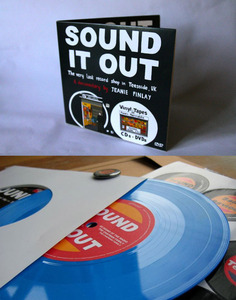Top 5 Misunderstandings About Self Distribution
In the US many filmmakers are starting to get that they need to be responsible for distributing and marketing their films. We’ve been in this new paradigm since 2007 at least. But here in Europe – the mythology of white knights rescuing your film and you and carrying your film into the limelight is still […]
Sound It Out!

Over the last five years an independent record shop has closed in the UK every three days. SOUND IT OUT (75 mins) is a documentary portrait of the very last surviving vinyl record shop in Teesside, North East England. A cultural haven in one of the most deprived areas in the UK, SOUND IT OUT […]
PMDs In Action
As you know, Sheri Candler, and I have been reaching out to working Producer’s of Marketing and Distribution (PMDs) and a few have contacted me with some festival and awards news: Stephen Dypiangco who is currently working as a PMD on “How to Live Forever” by Mark Wexler is also working as a PMD on a […]